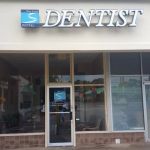
What Causes Gums to Recede and How to Prevent It: Essential Tips for Healthy Gums
- What Is Gum Recession?
- What Causes Gums to Recede?
- How to Recognize the Symptoms of Gum Recession
- How to Prevent Gum Recession and Protect Your Gums
- Treatment Options for Receding Gums
What Is Gum Recession?
Gum recession occurs when the gum tissue surrounding the teeth begins to wear away, exposing more of the tooth or even the tooth’s root. This condition can lead to tooth sensitivity, increased risk of cavities, and other serious dental issues. Unfortunately, gum recession is quite common and can affect people of all ages, often without noticeable symptoms until the condition becomes more advanced.
While gum recession is often associated with aging, it is a condition that can happen for various reasons, many of which are preventable with proper care and awareness.
What Causes Gums to Recede?
There are several reasons why gums may begin to recede. Understanding these causes is key to preventing the condition and preserving your oral health:
- Poor Oral Hygiene: The leading cause of gum recession is poor oral hygiene. If plaque and tartar build up along the gum line, it can lead to gum disease (gingivitis) and ultimately gum recession. Neglecting to brush and floss regularly can allow bacteria to thrive and damage the gums.
- Genetics: Some people are genetically predisposed to gum disease and receding gums. If your family has a history of gum problems, you may be more susceptible.
- Hormonal Changes: Hormonal changes, such as those occurring during pregnancy, menstruation, or menopause, can make gums more sensitive and vulnerable to recession.
- Teeth Grinding (Bruxism): If you grind your teeth, particularly at night, the constant pressure can push the gums back, causing them to recede.
- Misaligned Teeth or Crooked Bite: Teeth that do not align properly can exert extra pressure on the gums, leading to recession over time.
- Tobacco Use: Smoking or using smokeless tobacco can contribute to gum disease and lead to gum recession due to reduced blood flow to the gums.
- Age: As you get older, the risk of gum recession increases, especially if you've neglected your oral health throughout your life.
By identifying and addressing these factors early, you can reduce your risk of gum recession and maintain a healthy smile.
How to Recognize the Symptoms of Gum Recession
The symptoms of gum recession can vary depending on how advanced the condition is. Early signs may be subtle, but it's important to recognize them early on to prevent further damage:
- Tooth Sensitivity: If your gums recede, the sensitive root of the tooth may be exposed, leading to increased sensitivity to hot, cold, or sweet foods and drinks.
- Visible Gaps Between Teeth: As your gums pull away, you may notice that your teeth appear longer, and gaps may form between your teeth and gums.
- Bleeding Gums: Gums that bleed when brushing or flossing may indicate gum disease, which can lead to gum recession if left untreated.
- Bad Breath: Persistent bad breath (halitosis) can also be a sign of gum disease, a condition closely associated with gum recession.
If you notice any of these symptoms, it’s important to consult a dentist as soon as possible. Early detection can help prevent further gum damage and even tooth loss.
How to Prevent Gum Recession and Protect Your Gums
Fortunately, there are several steps you can take to prevent gum recession and maintain healthy gums:
- Practice Good Oral Hygiene: Brush your teeth at least twice a day with a soft-bristled toothbrush and fluoride toothpaste. Floss daily to remove plaque buildup between teeth.
- Use a Mouthguard: If you grind your teeth at night, consider using a night guard to protect your gums and teeth from excessive pressure.
- Visit the Dentist Regularly: Regular dental check-ups can help detect early signs of gum disease and recession. Professional cleanings are also essential to remove tartar buildup that regular brushing and flossing can't reach.
- Avoid Tobacco: Quitting smoking or using smokeless tobacco can significantly reduce your risk of gum disease and gum recession.
- Maintain a Balanced Diet: Eating a diet rich in vitamins and minerals, especially Vitamin C, can help strengthen your gums and reduce inflammation.
Taking care of your gums from an early age and adopting these healthy habits can help prevent gum recession and maintain your oral health for a lifetime.
Treatment Options for Receding Gums
If you are already experiencing gum recession, there are several treatment options available to help restore your gums and prevent further damage:
- Scaling and Root Planing: A deep cleaning procedure that removes plaque and tartar from beneath the gumline, helping to treat gum disease and slow down gum recession.
- Gum Grafting: In more severe cases of gum recession, a dentist may recommend gum grafting surgery. This procedure involves taking tissue from another part of your mouth and attaching it to the affected area to restore gum tissue.
- Laser Treatment: Laser technology can be used to remove infected tissue and promote healing in areas with gum recession.
Consulting with a dental professional is the best way to determine the right course of treatment for your specific condition. Your dentist will help you choose the most effective approach to address gum recession and restore your oral health.
Are you concerned about gum recession? Protecting your gums starts with good oral hygiene and regular dental visits. For more information on how to prevent and treat gum recession, visit Dentistry Toothtruth and schedule a consultation with one of our dental experts.
Don't wait for gum recession to worsen—take control of your gum health today. Click here to learn more and book your appointment!







 Palo Verde Smiles formerly known as Critchfield Dental4.0 (170 review)
Palo Verde Smiles formerly known as Critchfield Dental4.0 (170 review) Edward Feins, DMD PA4.0 (1050 review)
Edward Feins, DMD PA4.0 (1050 review) Perfect Smiles of Bensalem4.0 (98 review)
Perfect Smiles of Bensalem4.0 (98 review) Cash Family Orthodontics4.0 (141 review)
Cash Family Orthodontics4.0 (141 review) St Anthony Park Dental Care: Grossmann, Todd A DDS5.0 (4 review)
St Anthony Park Dental Care: Grossmann, Todd A DDS5.0 (4 review) Blue Creek Dental4.0 (46 review)
Blue Creek Dental4.0 (46 review) The Importance of Oral Health Education During Pregnancy for a Healthy Pregnancy
The Importance of Oral Health Education During Pregnancy for a Healthy Pregnancy Best Tips for Brushing Your Teeth Properly for Healthy Gums: Essential Techniques for Oral Health
Best Tips for Brushing Your Teeth Properly for Healthy Gums: Essential Techniques for Oral Health Why Skipping Dental Checkups Can Lead to Bigger Oral Health Problems
Why Skipping Dental Checkups Can Lead to Bigger Oral Health Problems Advantages of Porcelain Dental Restorations
Advantages of Porcelain Dental Restorations How Can Diabetes Cause Tooth and Gum Problems? Preventing and Managing Oral Health Issues
How Can Diabetes Cause Tooth and Gum Problems? Preventing and Managing Oral Health Issues Healthy Habits for Promoting Good Oral Health and Hygiene: Tips for a Healthy Smile
Healthy Habits for Promoting Good Oral Health and Hygiene: Tips for a Healthy Smile